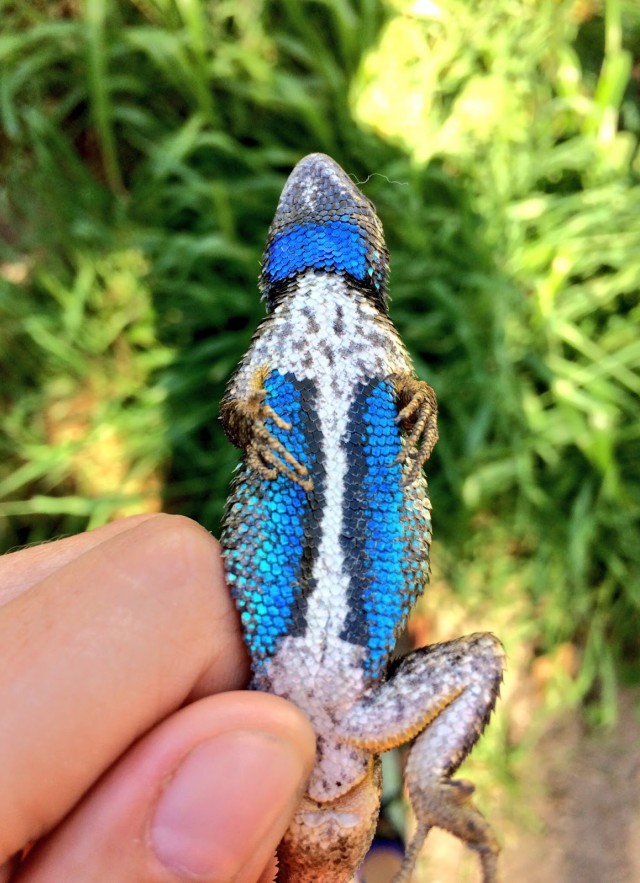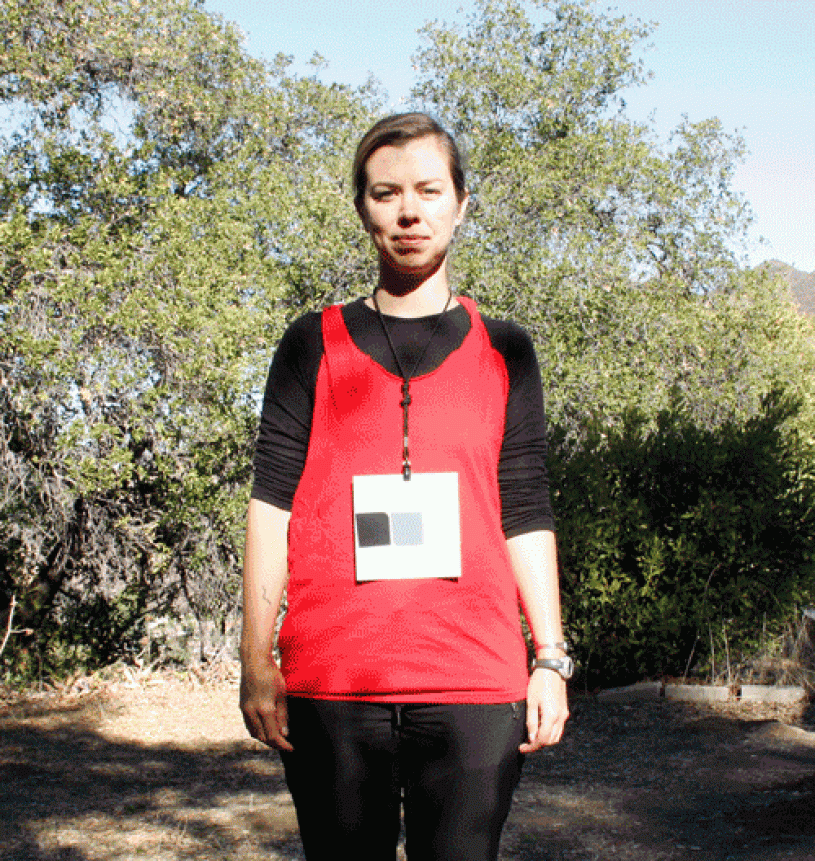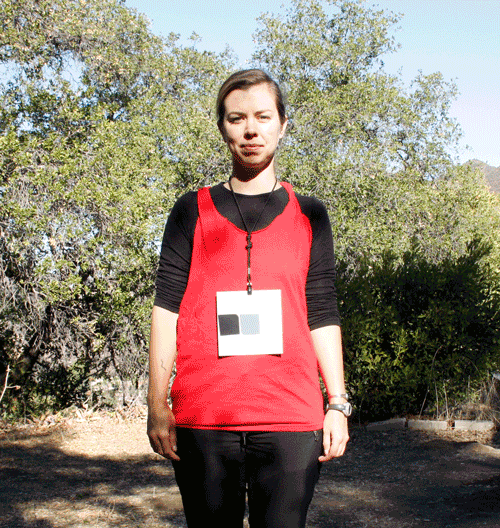What to Wear When Lizard Watching
Choose your outfit carefully before you go on a nature walk.

By Katie McKissick
Choose your outfit carefully before you go on a nature walk. The animals you want to see might be paying attention, such as western fence lizards. Recent research showed that these lizards were least reactive when people wore dark blue — the color most similar to the lizards’ blue patches that earned them their nickname, the blue-belly.
It all started when Breanna Putman, a postdoctoral researcher in NHM’s Herpetology Department, was given a neon orange shirt to wear when she was doing fieldwork around Los Angeles. With its bright color and visible Urban Nature Research Center and NHM logos, it’s a great way to assure people that you’re a scientist and not a criminal lurking in alleys for nefarious reasons. Within the UNRC, they’re called “don’t-shoot-me shirts,” because they were inspired by a particularly eventful evening when Herpetology Curator Greg Pauly was searching for nocturnal, introduced geckos in Orange County and two sheriffs approached him with guns drawn.
“With a bag full of geckos already in hand it was pretty easy to convince them we were biologists,” said Pauly. “But it was clear that we needed to do something to make ourselves look more conspicuous and official.”
But Putman was concerned about the possible effects the orange UNRC shirt might have on her study species. “I wondered if wearing them in urban habitats and not wearing them in rural habitats would mess up my results,” she said.

To test this, Putman went “lizard hunting” wearing one of four different colored shirts: light blue, dark blue, gray, and red. For each lizard she saw, Putman measured the “flight initiation distance”— a measure of how close an animal lets a researcher approach before it runs away — and recorded whether or not she was able to capture the lizard.


Just as she suspected, Putman found that lizards did indeed behave differently based on what color shirt she wore. She was able to get closer to lizards, and was more likely to catch them, when she wore dark blue.
Blue is an important color for western fence lizards because it’s their signaling color. Males use them to display to other lizards — both to announce their ownership of a territory to other males, and to try to attract females.
When Putman wore red, the lizards ran away sooner, and she was less likely to catch them. And surprisingly, the lizards responded similarly to red and gray shirts, even though gray is a more muted, neutral color than red. It seems that just because a color appears dull to us does not necessarily mean it will have the least effect on an animal.
This is the first study to show that a lizard species responds differently to various colors, something that had before only been observed in birds. But does wearing a species’ signaling color always mean scientists can get closer? The team plans to do follow-up studies on lizards that use other colors, such as the green anole which has a reddish-pink flap of skin on its neck called a dewlap.
But already, this research has big ramifications for biologists who are studying animal behavior, and nature lovers and ecotourists who want to observe or photograph wildlife. It suggests that certain bright colors and loud patterns so often featured on outdoor apparel might actually be affecting wildlife. And researchers have another factor to consider when doing fieldwork. The color of their clothing can absolutely affect the outcome of their experiments — whether they’re measuring how close animals let them approach or are trying to capture animals.
“Now I always wear the same colored shirt across all my study sites,” said Putman, who still wears her neon orange, “don’t-shoot-me shirt.” “I don't mind having a lower capture success as long as I don't get police called on me.”